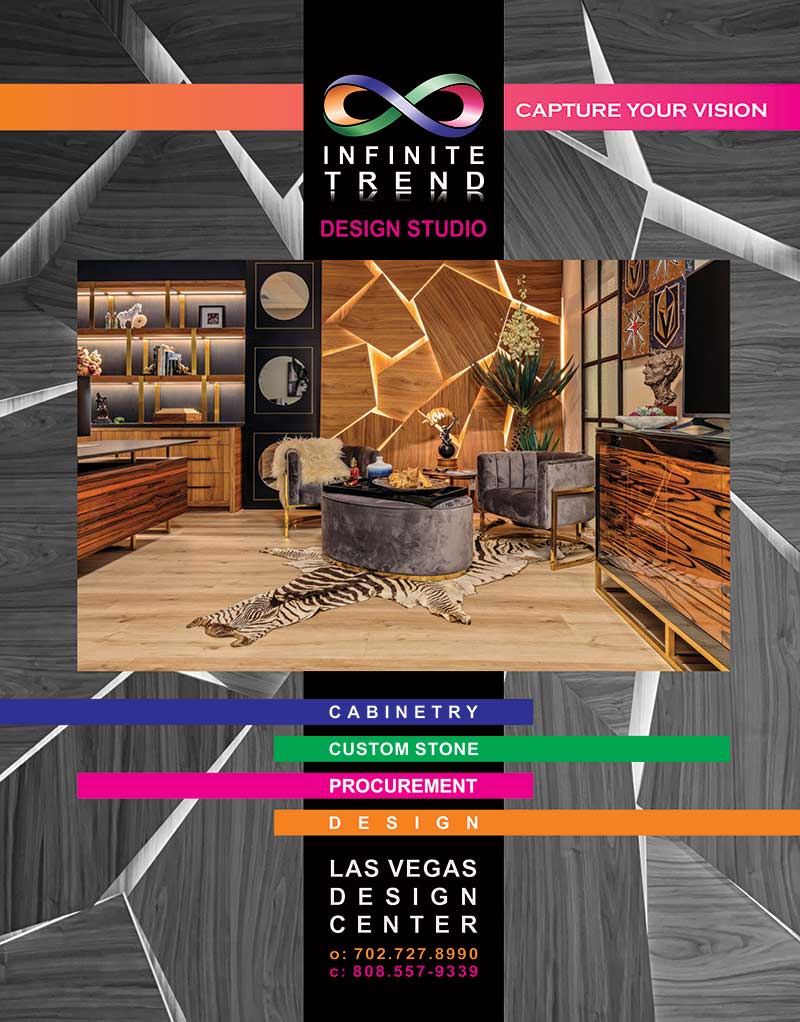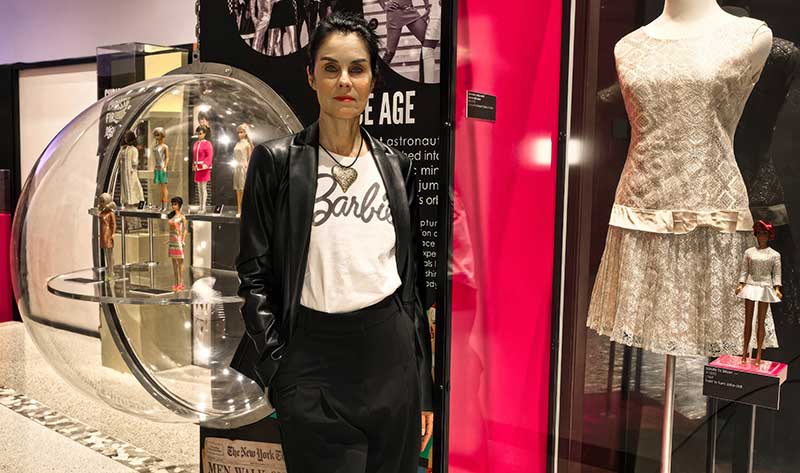
Photo of Karan Feder by Frank Molnar
From Costume Designer to Fashion Historian:
A Look at the Life and Legacy of Karan Feder
BY CHANELLE HAYES
Karan Feder’s story is a testament to the power of transformation. Growing up in Wisconsin, Feder didn’t have many dreams or goals at an early age. However, a pivotal moment in her third year of college at the University of Wisconsin–Madison, when she discovered her true passion for fashion, changed everything.
Like most individuals her age, Feder was still navigating life and her career path at the age of 20. A friend’s daring decision to pursue fashion in California sparked Feder’s interest in the industry. This bold move, however, was not just a spark but a flame that ignited Feder’s passion. She bravely followed her heart, enrolling at the Fashion Institute of Design & Merchandising.
Going from a person without a clear direction to someone with a focused goal was a turning point in her life. Her relentless drive and commitment to her craft earned her the respect of many and opened doors to the dynamic fashion and entertainment industry of Los Angeles.
Her move to Las Vegas led to further opportunities, ultimately paving the way for her current career as a fashion historian. She has been recognized with numerous awards for her work, and her books on fashion history have been bestsellers, further solidifying her position as a respected figure in the industry.
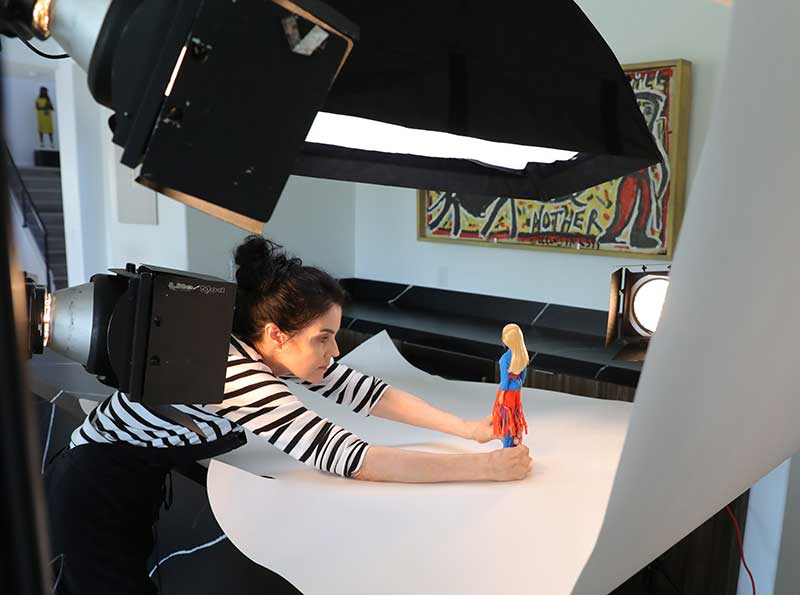
Behind the scenes with Karan Feder
Taking on Hollywood: The Land Where Dreams Come True
Feder landed her first Hollywood gig alongside world-renowned costume designer Bob Mackie, who has worked with entertainment icons such as Cher, Carol Burnett, Elton John, Marilyn Monroe, Marie Osmond, Dolly Parton, Diana Ross, Tina Turner, Barbra Streisand and Oprah Winfrey.
At the time, Mackie was looking for a wardrobe supervisor for actress and singer Mitzi Gaynor’s traveling stage shows. “I was just 20 years old, so when I heard the name Mitzi Gaynor, I didn’t know who she was,” she recalls. “I thought I was going to work for disco queen Gloria Gaynor. She was the only Gaynor I knew. Even though the show’s director kept saying Mitzi Gaynor in my interview, I still pictured Gloria.”
Feder landed the job, met Gaynor and was in awe. “She was one of the big stars during the Golden Age of Hollywood in the 50s and 60s. She kept shining in the spotlight through the 70s and 80s, traveling and doing legendary stage shows on the road. This was when everyone from Glen Campbell to the Osmonds to Sonny Bono and Cher had a variety show.”
Working with Mackie was a transformative experience for Feder. “I admire him so much,” she says. “He has a super unique hand and witty statement with his designs.” Her deep respect for Mackie and his unique design style significantly influenced her approach to costume design and shaped her future aspirations and goals.
It was a different take on design that she was highly interested in. “I fell in love with designing costumes rather than fashion.” Three years with the Mitzi Gaynor’s show helped further hone her skills and knowledge in the entertainment industry, paving the way for her future success in Hollywood. Her work on iconic shows like “The Golden Girls” and “The Wonder Years,” as well as Robert Redford’s first film, “A River Runs Through It,” involved creating memorable and character-defining costumes, contributing significantly to the visual storytelling of these iconic projects.
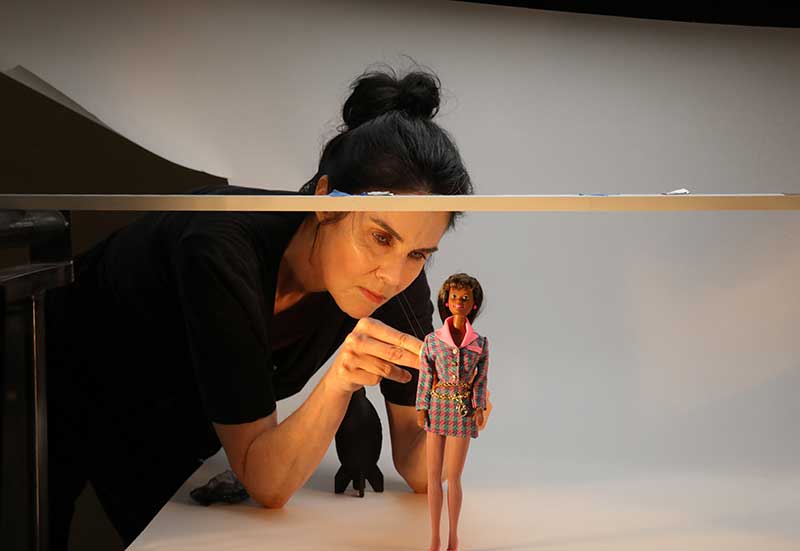
Behind the scenes with Karan Feder
Becoming a Fashion Icon in Her Own Right
With 10 years of experience as a costume designer in the entertainment industry, Feder felt the need for a change. She embarked on a new journey after marrying her entrepreneur husband, Michael.
In 1996, she launched Karan Feder Hollywood, designing, manufacturing, marketing and selling fashion accessories to the junior and children’s markets. Her first project, a children’s rainwear line, was a roaring triumph, reaching the shelves of Saks Fifth Avenue and Neiman Marcus. Feder’s design philosophy was to create a versatile ensemble, which she achieved by designing matching handbags and hats to complement the raincoat. Her handbags became so popular that even teens, young adults and even older individuals bought them.
It was a trend that piqued everyone’s curiosity so much that Feder was honored with the International Fresh Face Award, which recognizes the best new talent in the children’s wear industry. She was also nominated for an Earnie Award, which honors outstanding children’s and juvenile product companies for their excellence in design and retail.
Still based in Los Angeles, Feder continued to thrive in the fashion industry. She launched a new line dedicated to fun, playful novelty handbags made of faux fur and various plastics. Her handbag line was another massive hit for the fashion designer, and it took her worldwide, including to Las Vegas, which would soon become her permanent home.

From Hollywood to Exploring the Cabaret Costume Culture in Las Vegas
An unsettling earthquake damaged her Woodland Hills home, which ultimately led her to leave Southern California behind. “When Michael and I moved to Las Vegas in 2004, I planned to continue working on my fashion business and doing what I had been doing.” However, when Feder started exploring the city, she discovered the Liberace Museum, a place that would change the course of her career.
At the time, the Liberace Museum didn’t have a dedicated costume curator, so Feder took it upon herself to ensure they had one. Her initiative and leadership were evident when she developed and established the Liberace Museum’s Costume Collection Management Policy. This entailed coordinating, selecting, prepping, packing and processing an international traveling exhibition for the museum. She was also a guest curator for two original costume exhibitions at the museum.
Feder’s love for Liberace’s extravagant costume collection was more than just professional. It was a personal connection, a reminder of her days working with Mackie in Hollywood. This emotional tie to the museum’s collection deepened her commitment to preserving, interpreting and collecting these pieces, marking the end of her costume design career and on to something new.
In 2012, Feder launched a new business dedicated to the best-practice research, preservation, conservation and exhibition of archival costume collections. Entertainment Exhibitions, a full-service advisory and management firm, has a track record of developing and executing innovative and strategic partnerships to safeguard and showcase historic costume collections’ potential. The firm works with many Las Vegas-based institutions and national museums.
A year later, in 2013, Feder came across the Nevada State Museum, where she volunteered to serve as the museum’s guest curator of costume and textiles. Her mission was to develop a costume archive that vividly represented the evolution of the entertainment industry in Nevada, preserving its rich history for future generations.
“My work for the Nevada State Museum is perhaps one of my biggest career achievements,” she says. “I knew that “Folies Bergère,” which ran at Tropicana Las Vegas from 1959 to 2009, had saved all the surviving costume stock, storing the collection in the show’s old wardrobe rooms because no one knew what to do with it. So, I was in contact with the hotel’s entertainment director for many months, reminding them that the Nevada State Museum wanted to collect a few pieces to represent the show in its permanent costume and textile collection. Every time I called, I got the response that they wanted to hold on to it because they weren’t sure what they would do with it yet. Maybe they would reuse or auction it, but they weren’t ready to donate anything yet.”
Feder says that when she read in a local newspaper that the show “Mama Mia!” had been booked at the Tropicana Las Vegas, she knew they were going to need the wardrobe space where all of the costumes and pieces from “Folies Bergère” were housed because “Mama Mia!” was a super costume-heavy show. “I made another phone call to the hotel entertainment director, saying, ‘Listen, it’s me again,’ and then went into why I was calling. And that was all it took.”
Shortly after that phone call, the “Folies Bergère” costume archive arrived at the Nevada State Museum in towering heaps, boxes and bags. Feder says that the collection was disorganized, uncatalogued and not inventoried, as is the case with the majority of contributions to museums. For her, it was essential to locate existing research collections to help identify the donated materials and their interpretation. “Since I was the museum’s curator, I was in charge of making sense of the costume archive,” she says. “It was challenging at first because I never had the pleasure of seeing “Folies Bergère” before.”
Her aggressiveness and determination led to the birth of the “Les Folies Bergère: Entertaining Las Vegas, One Rhinestone at a Time” exhibit at the Nevada State Museum. It has put the museum on the map, as it now boasts one of the world’s most significant museum collections of cabaret costumes. The impressive collection, which has over 8,000 pieces from the show, draws you into its glamorous legacy from when it opened to its final curtain call. “When the exhibit opened, it was a proud moment for me because I knew that was a huge legacy for Las Vegas.”
Complementing the impressive exhibit, Feder’s book, “The Folies Bergere in Las Vegas,” released in 2017, is a significant historical work of art that pays homage to the iconic show. It features never-before-seen photographs, costume design renderings and intriguing documents from local archives. This book is a must-read for those seeking a deeper understanding of Las Vegas’s longest-running musical stage show. It wasn’t until three years later that Feder’s next big project would arise.
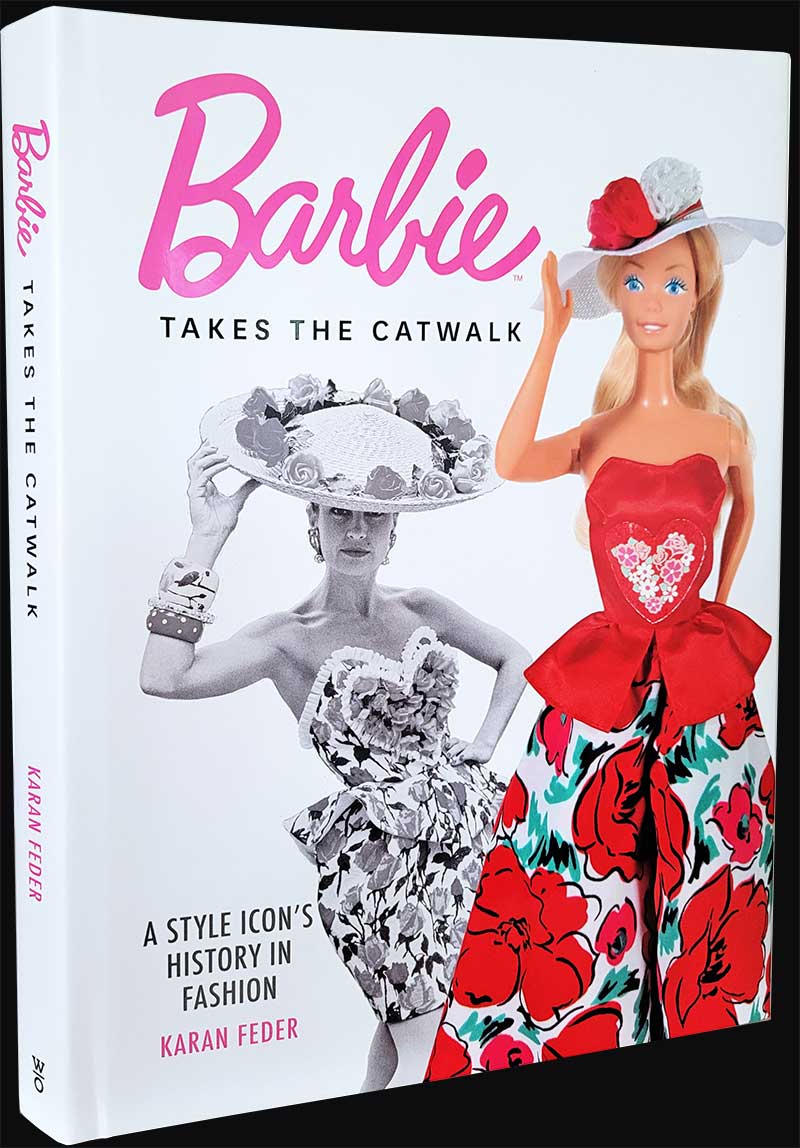
Exploring Barbie Fashion and Beyond
Feder’s work was significantly impacted when the world came to a halt in 2020 due to the COVID-19 pandemic. “The Nevada State Museum closed during this time, so I sat at home looking at my list of projects I wanted to do.”
Feder says that David Porcello, a colleague at the Nevada State Museum, had been a lifelong vintage fashion collector, including Barbie doll fashion. “It was unusual because most people collected the dolls,” she says. “However, he wasn’t interested in dolls; he only liked fashion. His vast collection featured nearly every garment made for Barbie between 1959 and 2000.”
Feder acquired several pieces from Porcello’s vintage fashion collection for the Nevada State Museum’s archive. Still, she couldn’t figure out how to make the Barbie doll fashion pieces fit into the museum’s collecting mission. “David and I both have such a heavy fashion background that we thought, well, wouldn’t it be interesting if we could tell the evolutionary story of Barbie doll fashion through life-size fashion pieces?”
This brilliant idea led to “Barbie: A Cultural Icon Exhibition, 60 Years of Fashion and Inspiration,” the first Barbie doll exhibition to tour North America. It was created and toured by Illusion Projects Inc. and curated by Feder in partnership with Mattel Inc. The exhibit debuted in Las Vegas and has since traveled to museums in Phoenix, Arizona, and Calgary, Alberta, Canada. It’s currently being displayed at the prestigious Museum of Arts and Design in New York City from now through March 2025.
Feder’s development of this project ultimately led her to publish her 2023 book, “Barbie Takes the Catwalk: A Style Icon’s History in Fashion.” Feder examines the Barbie doll’s fashionable history to provide a fascinating timeline across many decades and hundreds of miniature Barbie doll garments. The resulting narrative reveals an incredible portrait of the cultural evolution of American women during the last half-century. Feder adds, “It was also fascinating to explore some of the fashion trends that Barbie’s designers did not choose to embrace and why.” “Barbie Takes the Catwalk: A Style Icon’s History in Fashion” has been translated into a handful of languages and has earned an Independent Book Publishers Award for excellence.
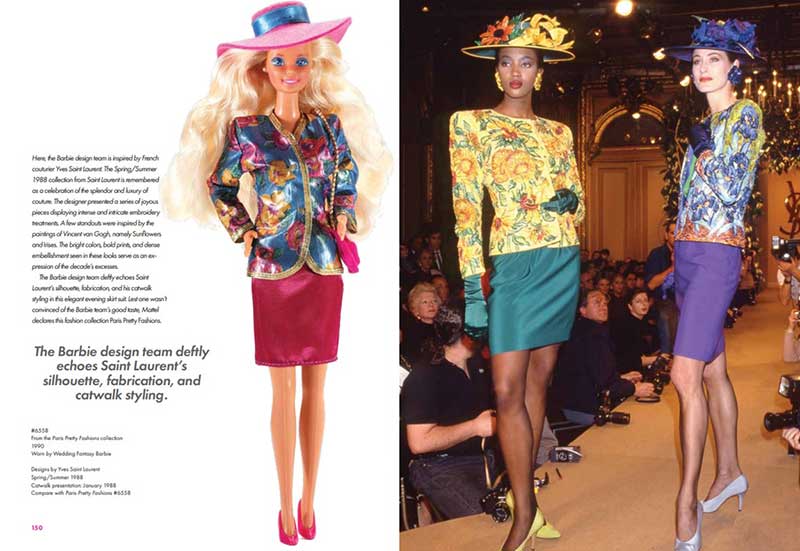
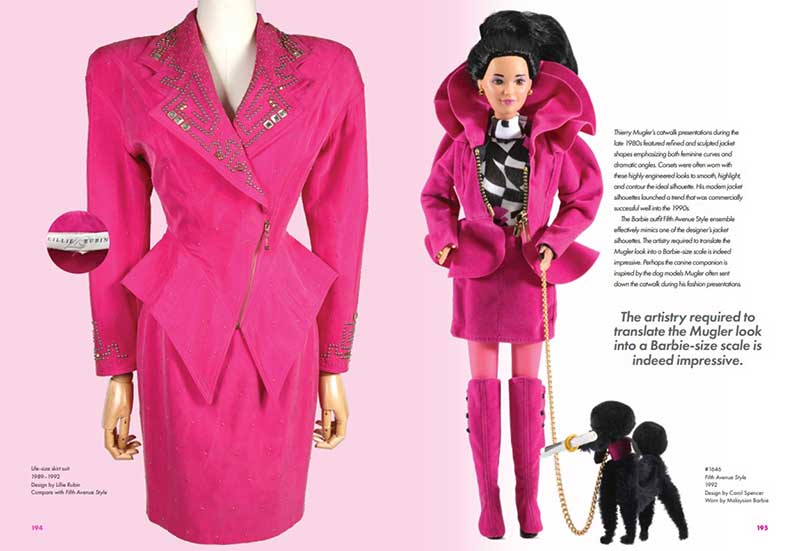
Embarking on Her Next Chapter of Success
What’s next for the accomplished author? Feder is currently working on three new projects. “I’m completing my second Barbie book, focused on the evolution of Barbie in the workplace,” she says, which is expected to be released in 2025.
Feder is also working on another book that will showcase the “Folies Bergère” cabaret show again and will be available in 2025. “Folies Bergere, A Parisian Extravaganza in Las Vegas” is a coffee table edition designed to glorify the show’s inimitable visual identity from 1959 through the mid-70s. Feder explains, “The implosion of Tropicana Las Vegas lowered the final curtain on the property’s history and its legacy production show. I want to ensure this unique Las Vegas story survives for future generations to reflect upon.”
Lastly, Feder has partnered with her publisher and Graceland to develop a book that explores famed costume designer Bill Belew, who worked on Elvis Presley’s stage costumes from 1968 to his death in 1977. “With this book, I plan to look at the evolution of Bill’s work for Elvis and how the fashionable trends of the era inspired it,” Feder says. The book is expected to be released in 2026.
For more information on her services and projects, visit www.entertainmentexhibitions.com.


